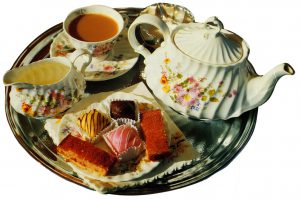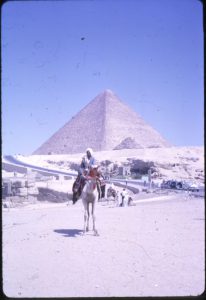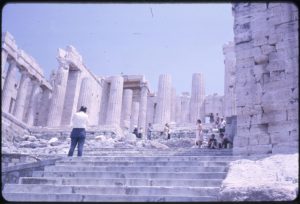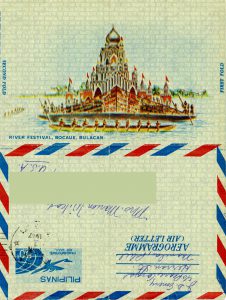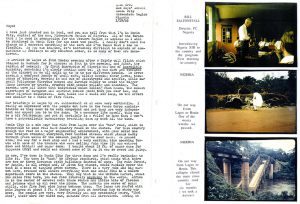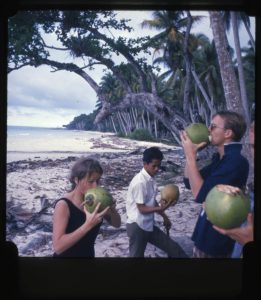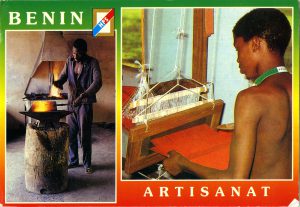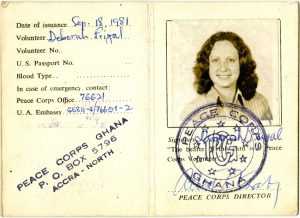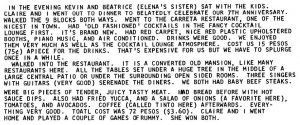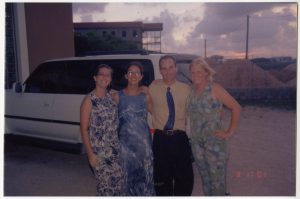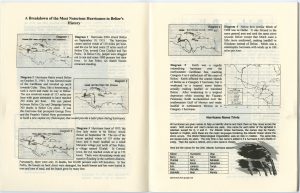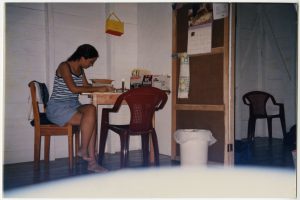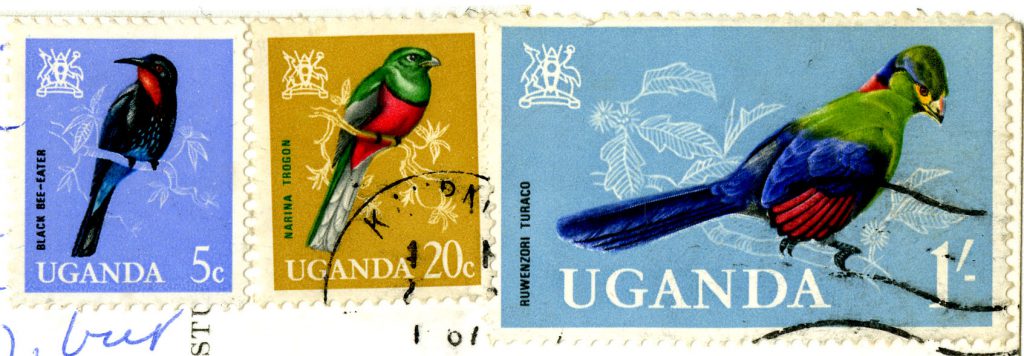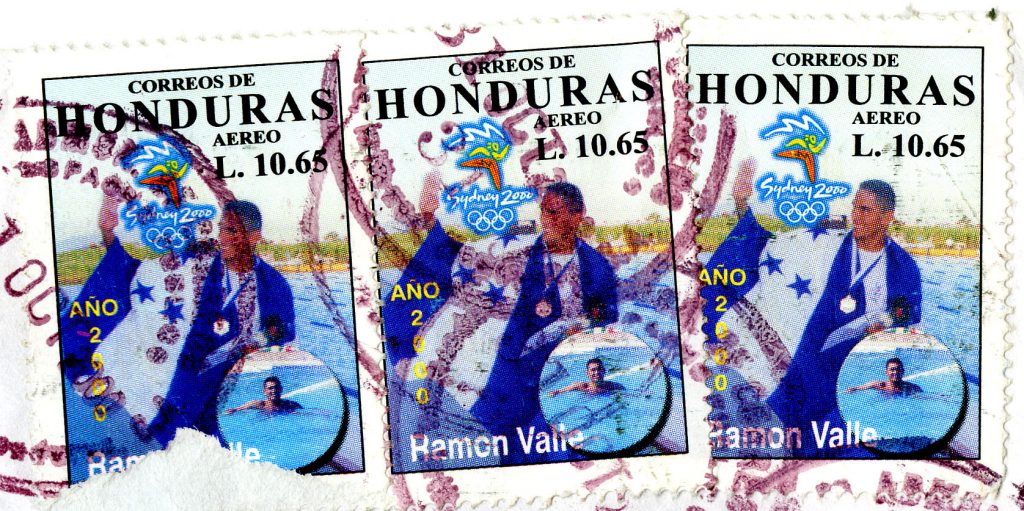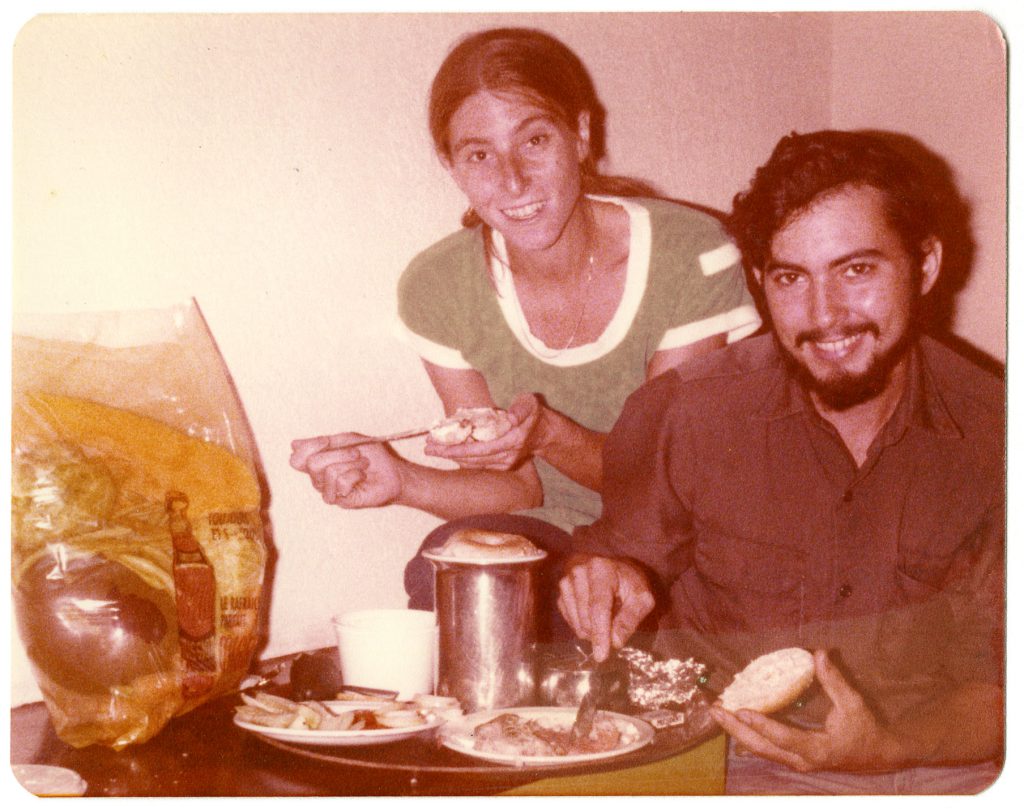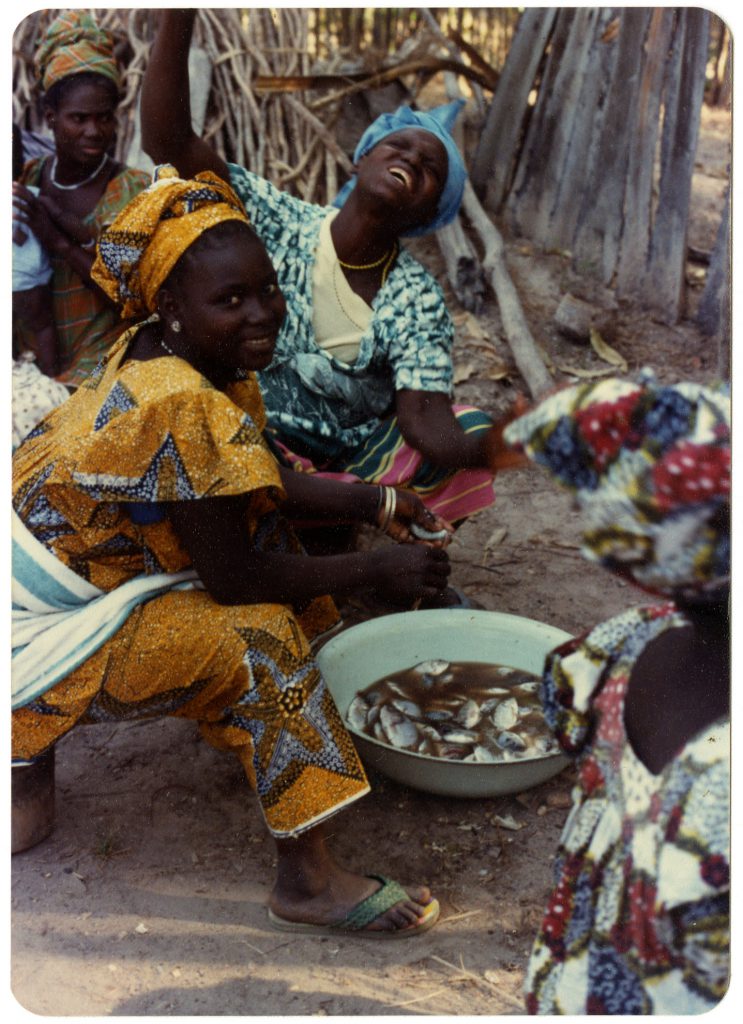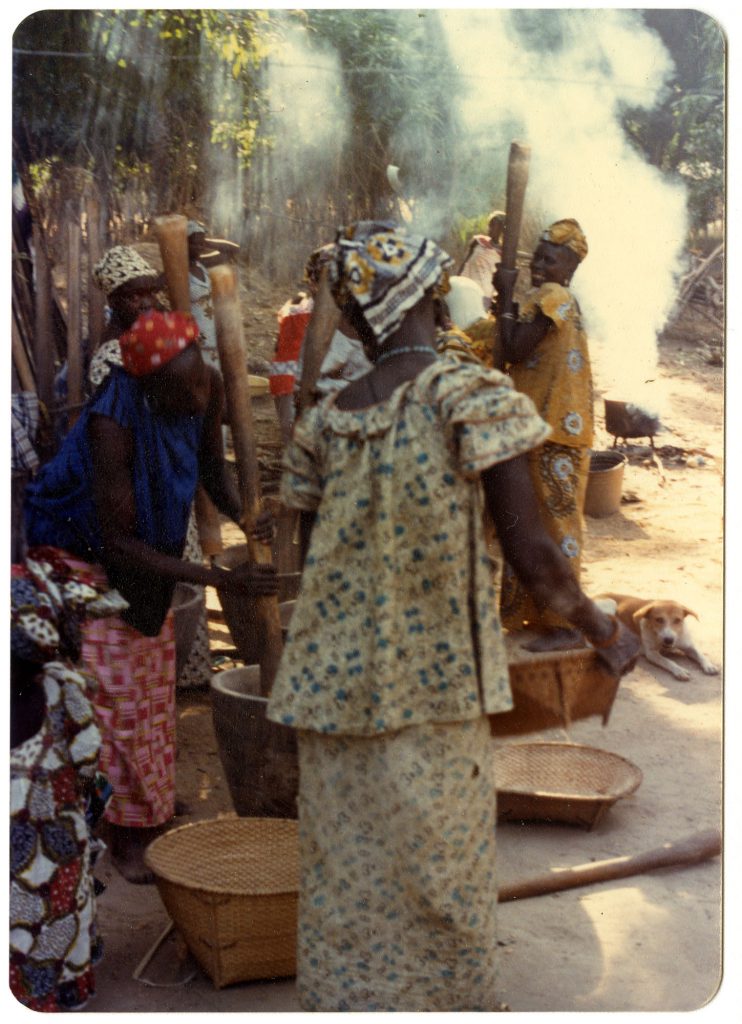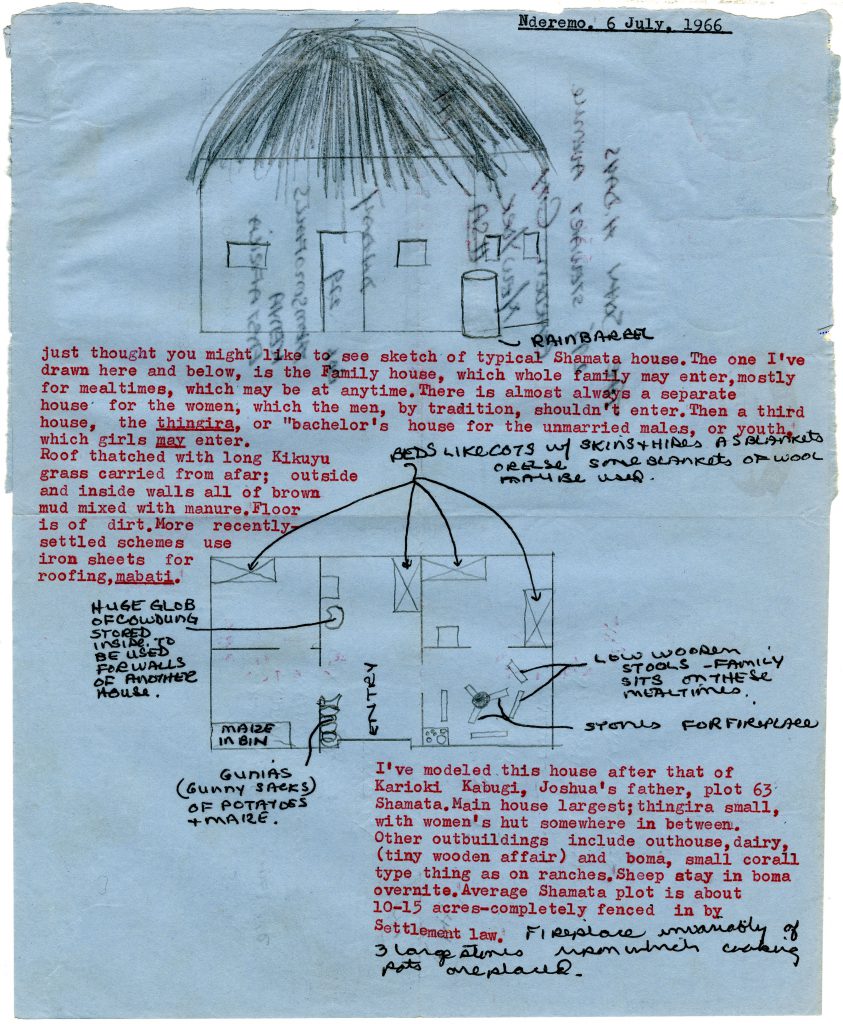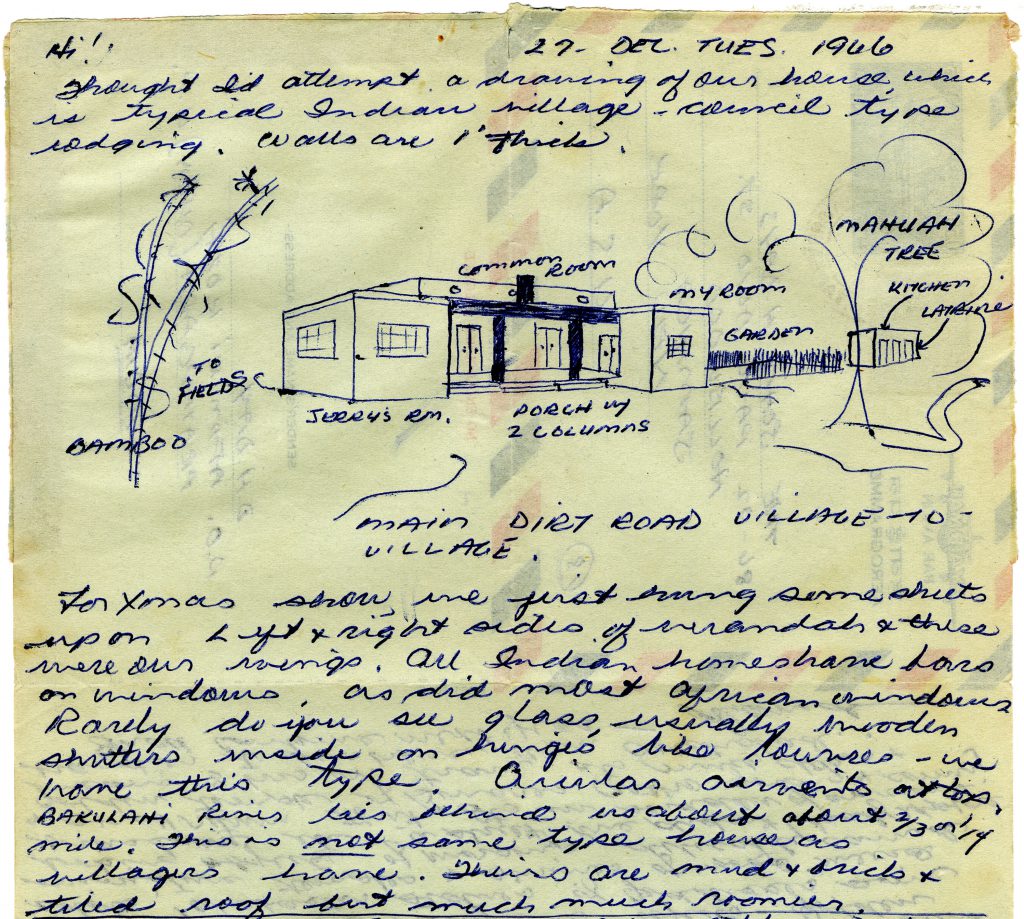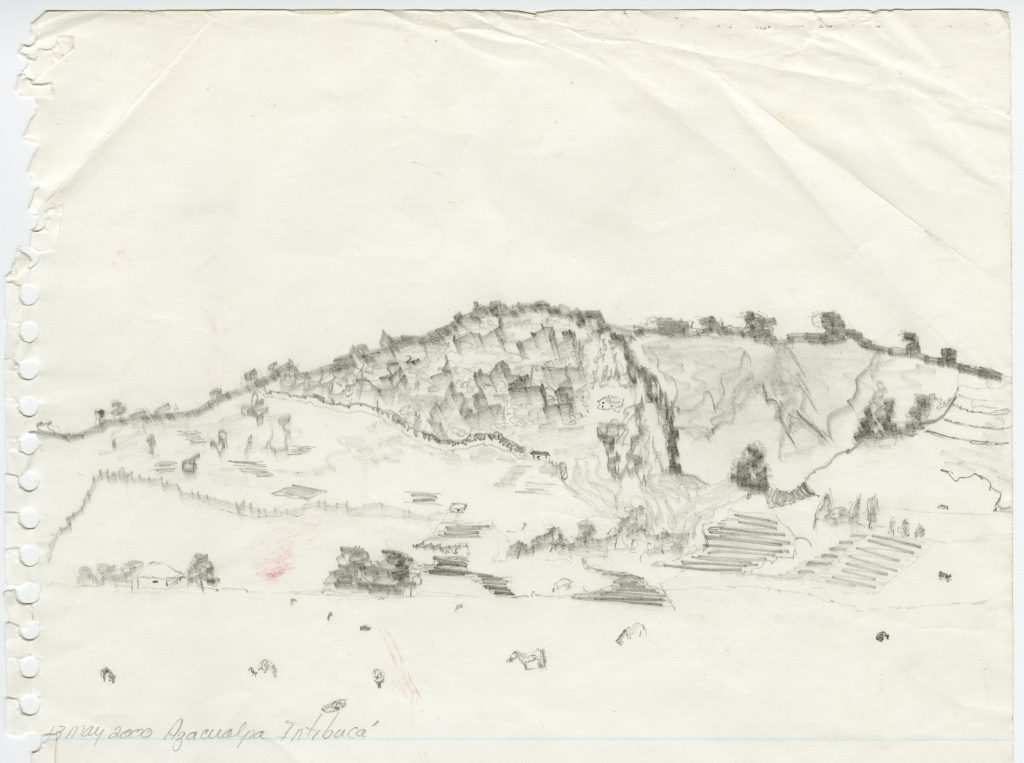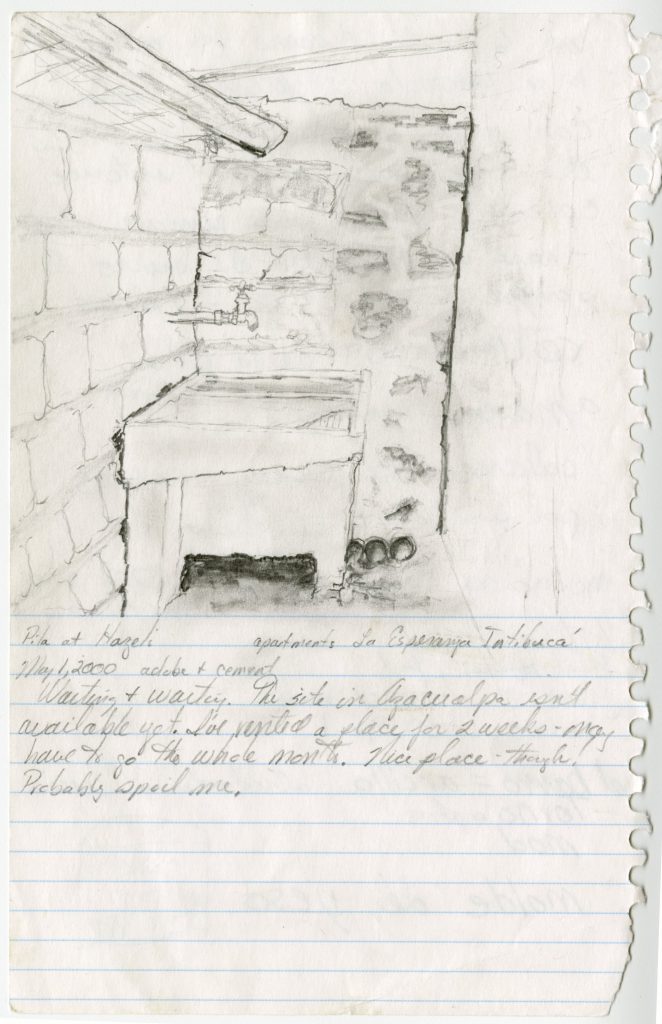While Americans celebrate Halloween with crazy costumes, haunted houses, and trick-or-treating, people all over the world have been observing a variety of festivals. Peace Corps Volunteers, as temporary residents of various nations around the world, experience these celebrations.
Volunteers have one of three experiences:
1) They don’t celebrate at all.
Halloween is sometimes an easy holiday to overlook so either the volunteer forgets, they are too busy to celebrate, or there are just no celebrations. Bobbe Seibert, who served in Honduras, notes that she just carried on with her day.

Bobbe Seibert, Honduras, 2000. “Tuesday Oct 31 Halloween – not that anyone noticed here. I think tomorrow is day of the dead here too but am not sure. Up at 6:30 – swept & washed up 7:30 at the corredor.
2) They celebrate local festivals.
Claire Pettengill notes in a letter home that she was given a holiday to celebrate the Muslim festival of Eid al-Adha, the “sheep-killing” holiday, which honors the willingness of Abraham to sacrifice his son at God’s command. She also had some time off for a Moroccan national holiday.

Claire Pettengill, Morocco, ’78-’80. “We get a long vacation for the sheep-killing holiday — 7 days beginning Oct. 30. I’m going to Berkane to see my adopted family for one day, then probably will head south to Marrakech with Amy. Haven’t had much time to travel.”

Claire Pettengill, Morocco, ’78-’80. “We have Monday off because of a national holiday (La Marche Verte–when Spain, in cooperation with Algeria, returned the Spanish Sahara to Moroccan control, in 1970-something, there was a huge peaceful march to that area, which is one of the biggest patriotic holidays each year) and Amy has gone to Taza, a Moroccan town.”
Both Winifred Boge in India and Al & Anne Briggs in Malaysia celebrated the Hindu Festival of Deepavali (Diwali). Also called the Festival of Lights it “spiritually signifies the victory of light over darkness, good over evil, knowledge over ignorance, and hope over despair,” where people light and place candles all over their home, as Winifred mentions in her letter.

Winifred Boge, India, ’65’67. “Speaking of Christmas – Halloween passed with nary our indication of such – but week before we had Deepavali with candles outside.”

Al & Anne Briggs, Malaysia, ’64’66. “Today we had a holiday for the Hindu festival of Deepavali, but of much more importance to us, of course, are the elections at home. You will be voting while we are asleep.”
3) They celebrate American traditions.
Even though volunteers are far away from home, they are still able to share American customs with their communities.
Margaret Fiedler had a party with her students in Guatemala where she served from 1985-87. She introduced them to bobbing for apples.
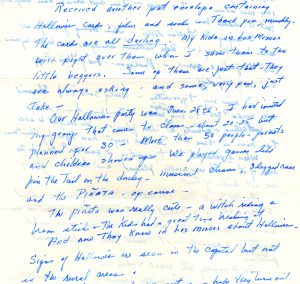
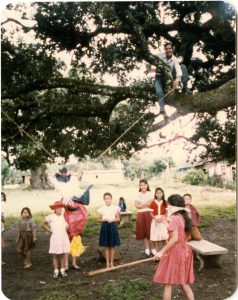
That’s Chavez in the tree – in the other end of the rope is another boy – they jerk the rope so the kids can’t break the pinata right away. Notice the girl blindfolded with the big stick – it really gets exciting – the kids can’t wait to pounce on the candy as it spills out.
Lynda Smith-Nehr and fellow volunteers dressed up in costumes while they were in the Philippines.
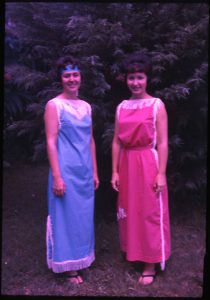
Lynda Smith-Nehr, Philippines, 1962-1964. “Halloween, Lorrie & me.”

Lynda Smith-Nehr, Philippines, 1962-1964. “Halloween, Mrs. Pamplona.”
Halloween may not be an international holiday, but there are many different ways that people all over the world celebrate this time of year.


